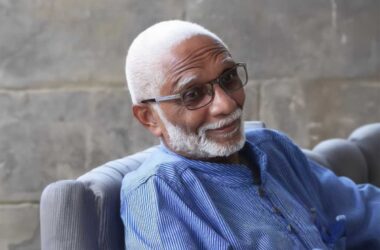
Disclaimer: the views presented are those of the author and do not necessarily represent those of any of the organizations he is associated with. Comments and feedback that further the regional dialogue are welcome at [email protected]
Boards of directors and other governing bodies are made up of individuals who should have specific characteristics; together, they should provide competencies that support the responsibilities and objectives of the organisation. It is important to remember that organisations are governed through systems and the governance systems always have one, and only one, governing body.
If the governance system is to be appropriate to the challenges of the organisation, the governing body also needs to ensure that it has the competence to deal with the matters that come before it. It should understand that it is responsible for ensuring that other groups governing involved in governance are able to fulfil their part.
Ten years ago leading governance experts in Australia (Kiel et al.) argued that there has been a “dual increase in both task breadth (or number of tasks) and depth (or degree of competence in carrying out tasks)” which has led to a multiple increase (quadrupling) of what is expected of modern boards and directors.
The climate crisis, biodiversity loss, pollution, social tensions, pandemic, wars, acceleration of disruptions by nano-technology, computing power, and artificial intelligence have continued to grow since then. Never before has the world been more complex. Never before has there been more wide-spread disruption of business models. Never before have companies faced greater risks and opportunities. Never before have organizational governance systems been more challenged. Are we up to it? What needs to be done?
Let’s first orient ourselves. In order to determine if governance systems are up for it, we need to understand what governance means.
According to ISO 37000 Governance of Organisation, which is the first global benchmark on good governance, to govern an organisation refers to “human-based systems by which an organization is directed, overseen and held accountable for achieving its defined purpose.”
The second question we need to ask is, who is involved in governing an organisation? In considering this question, our mind instantly goes to the board of directors. According to ISO 37000, boards of directors are examples of what are generally known as governing bodies. The governing body refers to a person or group of people who have the ultimate accountability for the whole organisation. They are involved in governance, and responsible for establishing an effective framework through which all groups involved are enabled to fulfil their role in the governance system.
According to ISO 37000, there could, depending on the organizational context, be others involved in the governance of the organisation. Let us illustrate this using two examples, a state-owned enterprise and a family-owned business.
In the case of a state-owned enterprise we have the ‘Ownership Ministry’ (in the case of Trinidad & Tobago, the Minister of Finance has the role of Corporation Sole) and then the Line Ministry. A lot of corporate governance guidance is derived from and partially adapted from listed company examples. But those cases are not always the most appropriate. ISO 37000 provides a lot of clarity and specific guidance in that respect. Both Ministries are governing groups and involved in governance – but in very different ways. If there are divisions or subsidiary organisations, then the managers of those subsidiaries also have a role to play. In addition, other internal organisational functions must be integral parts of the governance system.
In the case of a family business, some family members may not be shareholders and are therefore not members of the organisation. However, the governing body of the organisation, the board, may well decide that it wants to systematically take into account the views of other family members who do not hold shares, the so-called reference stakeholders.
The most important point to be derived from the above is that organisations are governed through systems and the systems always consist of one, and only one, governing body; and there are always also member stakeholders (inaccurately often called ‘owners’) who have important roles to play in governance and there could be other governing groups.
This understanding is very important, because when we determine if the governance system is up for the challenge we need to understand that the governing body needs to ensure that it has the competence to deal with the matters that come before it, and it needs to understand that it is also responsible for ensure the other governing groups involved are able to fulfil their part.
Therefore, how should a governing body assess whether it and the other governing groups have the necessary competence?
First, it needs to map the governance system and determine what groups are involved in governing the organisation.
Second, it needs to assess the collective capabilities required by each governing group. To do this the governing body needs to develop a ‘governance profile’, which summarizes the legal, regulatory, good governance guidelines, and requirements derived from the desired strategic positioning of the organisation for itself and the other governing groups. In all cases, the governing body would start with what the statutes prescribe for the roles. However, the governance profile would always go beyond that to include the specifics of the current and anticipated circumstances. This needs to be a forward looking profile that takes into account the organisational strategy, associated risks within the industry, and the organisational value and business models.
Third, the governance profile is translated into competencies that should have both individual and collective measurement criteria. In order for the competencies to be useful and meaningful, they require definitions. In developing the definitions, care needs to be taken not to confuse governance competencies with those of management. Take, for instance, the domain of risk, which deals with the effects of uncertainty on objectives. Governing bodies need to not only manage their own risks, but they need to also govern risk for the whole organisation.
Fourth, the governing body needs a system for determining the existing and required levels of competencies at the individual and collective level for each governing group. Some organizations do these assessments by simply sending each director a list of competency keywords (with no definition) and ask them to indicate their competency using a tick or any other system they desire. The result in those circumstances is often worse than not having done anything; it often leads to a false sense of security derived from misguided understanding. A defined system for scoring is desirable. Human Resource professionals can be of great assistance because they have established systems for individual assessment (though rarely of the collective competence).
Once developed, the governance profile can be used for systematic and strategic recruitment of governing body members, for training and for evaluation. Governing bodies are well advised to work alongside ESG experts, as well as with their executives, and risk, audit, and compliance professionals to understand how work of the organization is likely to develop.

Dr Axel Kravatzky is managing partner of Syntegra-ESG Inc., chair of TTBS/TC309 Mirror Committee, vice-chair of ISO/TC309 Governance of organizations, and the co-convenor and editor of ISO 37000 Governance of organizations – Guidance. He is currently the project leader for ISO 37006 Indicators of effective governance.





